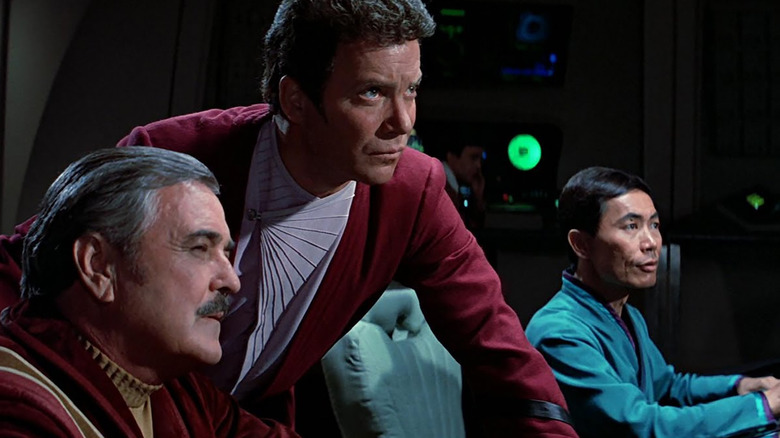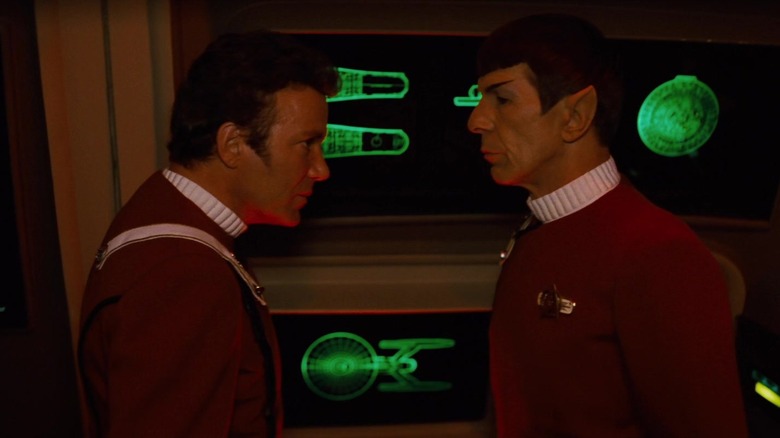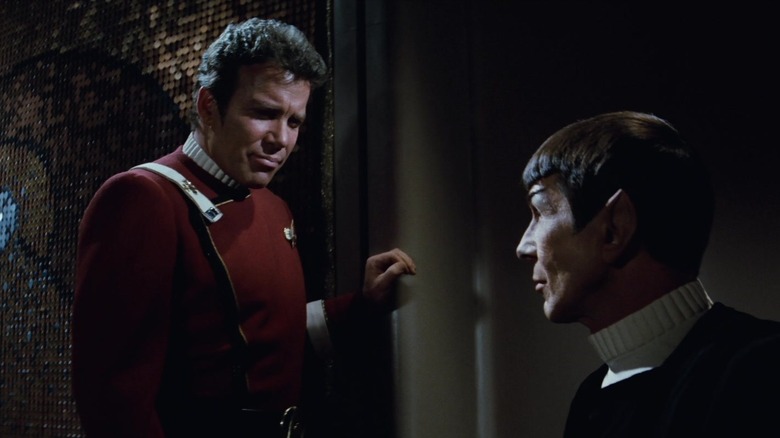
The Encyclopedia of Science Fiction speculates that the popularity of "Star Trek" came about because, compared to written science fiction of the time, "its exoticism was manageable and unthreatening." As someone who finds manageable and unthreatening entertainment to be dull, I can understand their reservations. But I think that the banality of "Star Trek" is actually what has allowed it to persevere over so many years.
The "Star Trek" formula, built for the constraints of television, lends itself to remixing far more elegantly than the rickety architecture of "Star Wars" expanded universe continuity. Rather than being burdened with telling part of one big story, a "Star Trek" narrative seems content to be one of many stories. Perhaps this is why the ranks of "Star Trek" tie-in novels include so many talented science fiction writers, such as "Young Wizards" series creator Diane Duane and community luminary Vonda N. McIntrye. While the novels themselves vary in quality, the best of them open small windows through which the reader can see what, in the mind of the writer, "Star Trek" could be.
As the minds of "Star Trek" fans were shaped by the series and spin-offs they loved, the creators of "Star Trek" themselves took influence from the wants and desires of their audience. So it only makes sense that Harre Bennett, the famous "Star Trek" film producer whose work spans from "The Wrath of Khan" to "The Final Frontier," claims that at a key moment while brainstorming "The Search for Spock" takes cues from an unexpected source: fan fiction. In "The Fifty-Year Mission," an oral history of "Star Trek" as a whole, Bennett discusses the challenges the team faced in devising a fitting ending for a trilogy built on improvisation and momentum. He says:
"Somewhere along the line I read a fan poem in one of the hundreds of fan magazines about Star Trek. It was first-person Kirk. It said, "I left you there. Why did I do that? I must come back to you, my friend." I thought, "That's it!" I suddenly had a thrust. It got a lot easier from that point."
To Boldly Go Where No Man Has Gone Before

We don't know which poem gave Bennett what he needed to move forward with "The Search for Spock." The web of "Star Trek" content produced by fans is vast and intricate, sprawling across time and space. That said, we can make educated guesses. It's possible that the poem Bennett stumbled upon is "gen," an accessible piece of fan narrative meant to give greater context to the series. But the thrust of the piece, Kirk longing to return to Spock, suggests another possibility. Whether Bennett or the actual writer of the fan poem were aware of it, the poem's heart (and by extension, the heart of "The Search for Spock") may rest in the growing "slash" fiction community at the time — that being, fan fiction featuring explicit gay romance.
The most popular pairing in the "Star Trek" fandom, and by extension one of the most popular pairings in science fiction history, is between the headstrong Captain Kirk and his Vulcan comrade Spock. We know that fans were debating these characters and their relationship from as far back as 1969, the year in which "Star Trek" was canceled in the United States and began airing in the United Kingdom. But those fans kept discussion private, sharing stories among close-knit groups of friends. It took several years for work produced by this community to see the light of day.
First, in 1974, with the publication of Diane Marchant's "A Fragment Out of Time," was a brief sketch of tender physical contact. If the piece left names and even pronouns ambiguous, the illustrations at its beginning and end left no such illusions. Then, in 1976, zine creator Gerry Downes produced "Alternative: The Epilog to Orion," the first full zine highlighting the Kirk and Spock pairing. Also published that year was Leslie Fish's "Shelter," the first full-length, publicly available Kirk/Spock short story.
'I Have Been And Always Shall Be Your Friend'

By 1979, the slash fiction community had established itself as a force to be reckoned with in the greater "Star Trek" fandom. When the novelization of that year's "Star Trek: The Motion Picture" revealed in a footnote that Kirk thought of Spock as a "t'hy'la" or "friend, brother or lover," there was a large and smart enough community to debate not just whether this meant Kirk/Spock was canon, but whether the term was nothing but a conciliatory gesture offered by folks without a real stake in the game. (Decades later, Disney would face similar accusations in its pursuit of "representation" detached from actual progressive politics.) This community would continue to expand as the "Star Trek" fandom made the jump from zines to the internet. Today, you can find thousands of their fan stories, poems and essays on Archive Of Our Own (AO3) which obtained them from the Kirk/Spock Fanfiction Archive via the Open Doors preservation project.
The majority of these fans were women, perhaps because they were not always welcome in the "Star Trek" fanbase. In a Polygon interview, the founder of the Kirk/Spock Fanfiction Archive remembers being locked out of a 1995 "Star Trek" convention by confused and angry fans. They apparently "barricaded the door and said, 'You girls are in the wrong place' ... They thought that we had just come by accident." Animosity exists, even today, between communities of fans who happily rewrite their favorite narratives and communities that adhere rigorously to canon and continuity.
Live Long And Prosper

Even in the face of this adversity, women have historically played an important role not just in "Star Trek" fan culture but in fan culture as a whole. Across the ocean from the United States, "Mobile Suit Gundam" director Yoshiyuki Tomino stated in his characteristically blunt fashion that without its female fanbase, "Gundam" never would have survived. "Even if you make something mecha fans would like," he says, "it wouldn't necessarily be considered a piece of art."
The secret to the long-term appeal of both "Star Trek" and "Mobile Suit Gundam" aren't just the high-concept ideas or themes. It's the fact that those ideas and themes are bound in the service of exploring characters. Kirk and Spock (or in the "Gundam" world, Char and Amuro) might not be especially complex on their own, but they accumulate texture and depth through repetition and iteration. In this endless cycle of death and rebirth, fan writing and art plays as important a role in keeping those old stories vital as "canon" material.
Today, "Star Trek '' persists as television, film and even animation. The cast and crew deserve credit for their hard work engineering a future for a series long denied one. But when producer Harre Bennett took inspiration from that fan poem, was he creating the next chapter of "Star Trek" for the fans, or were the fans producing the next chapter of "Star Trek" through him? "Star Trek" is a story of many worlds, and the world as created by the cast and crew is just one of them. The rest sprawl infinitely, carved into the cosmos by the pens of a hundred slash communities.
Read this next: 12 Awesome Sci-Fi Movies That Never Got Sequels
The post How a Piece of Fan Fiction Became a Full-Fledged Star Trek Movie appeared first on /Film.
from /Film https://ift.tt/Ngek6OL
